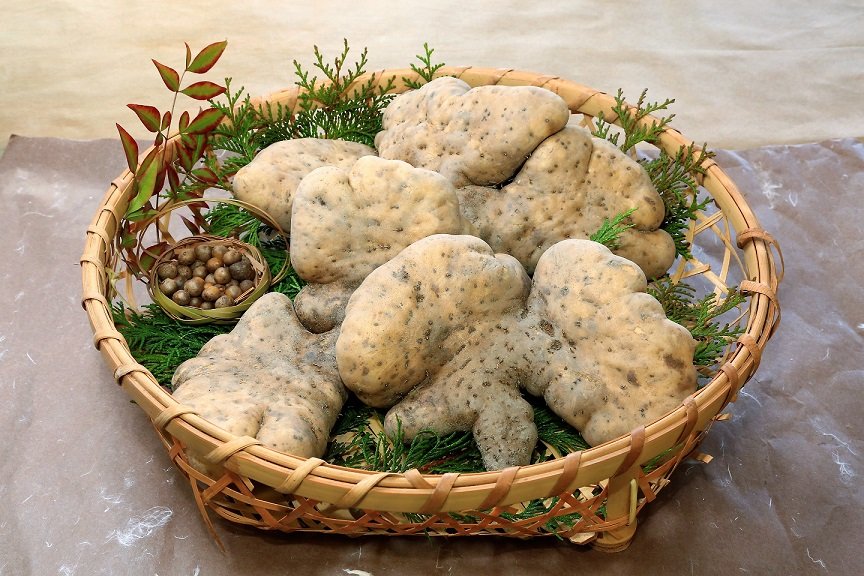Tokuji Yamanoimo
| Registration Number | 100 |
|---|---|
| Name of the GI | Tokuji Yamanoimo |
| Class | Vegetables/ Cereal grains/Pulses |
| Date of Protection | 2020/11/18 |
| Producing Area |
Yamaguchi Prefecture
Tokuji Town, Saba County (the administrative name of the area as of September 30, 2005) (the current Tokuji District, Yamaguchi City, Yamaguchi Prefecture) |
| Applicant - Name and Address | Yamaguchi Prefecture Agricultural Cooperative 2139 Ogorishimogo, Yamaguchi City, Yamaguchi Prefecture |
Producing Area
Tokuji Yamanoimo is a Japanese yam produced in the former Tokuji Town, Saba County, Yamaguchi Prefecture (the current Tokuji District, Yamaguchi City, Yamaguchi Prefecture).
Tokuji Yamanoimo is fist-shaped, with short stem-end segment, wide shoulder, and a scallop-like rim. The skin is smooth and has less fibrous roots on the surface of the edible portion. Grated Tokuji Yamanoimo has stronger viscosity and is more paste-like than yams produced in other regions.
For the production of Tokuji Yamanoimo, the seed yam of Tokuji Yamanoimo is cultivated in paddy fields in the producing area in rotation with paddy rice.
In terms of shipping standards, crops that are not rotten or deteriorated, or damaged by insects and diseases can be shipped as Tokuji Yamanoimo, and those that show minor symptoms of these conditions can be shipped for processing purposes.
High-quality crops of an ichoimo variety, to which the Tokuji Yamanoimo belongs, are generally considered to grow only in areas with low groundwater level, and which do not dry during the growing season.
In the producing area, however, yams with a shorter stem-end segment have been selectively bred, and the crops are cultivated as a rotational crop to rice in paddy fields, making it possible to maintain the necessary soil humidity in a shallow paddy field with limited amount of plowed soil, thereby allowing for the stable production of high-quality yams.
A document shows that Japanese yam cultivation was in place in the producing area by the late Edo Period (1).
Since 1988, the producing area, in collaboration with Yamaguchi Prefecture Agricultural Experiment Station (the current Yamaguchi Prefecture Integrated Agricultural Research Center), has been working to pursue further quality improvement through initiatives such as selecting a superior lineage having thick flesh and the shape characteristic of the indigenous variety.
As of FY 2018, the number of producers is 23, and the production volume is around 4 tons.
- The Edo Period: 1603-1867. It is a period of Japanese history characterized by the establishment of a shogunate (feudal military government) in Edo (now Tokyo). Political administration under the Tokugawa clan began when Tokugawa Ieyasu became the era's first shogun.


